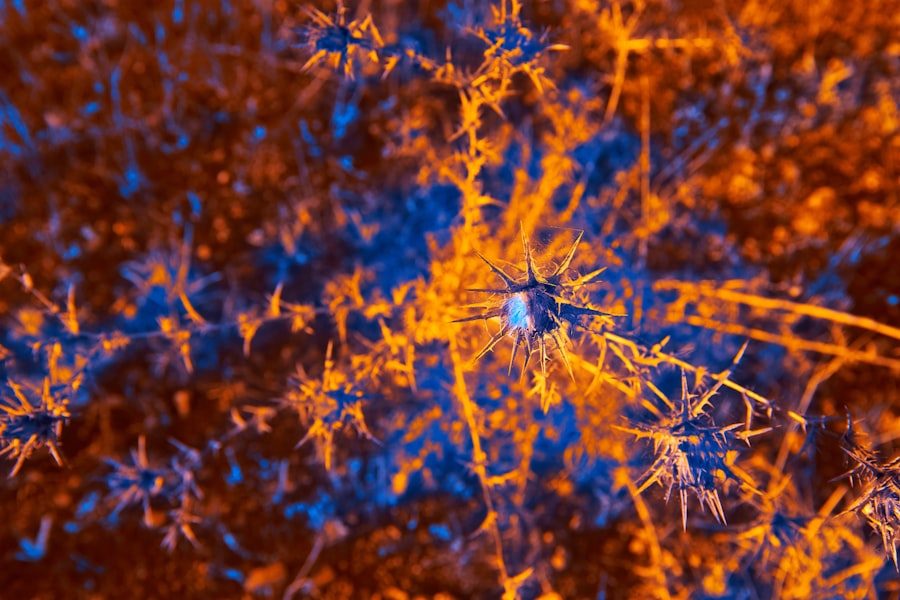To embark on a journey of self-discovery and healing, it is essential to understand the concept of the inner child.
It embodies your innocence, creativity, and joy, but it can also carry the wounds and traumas from your early years.
Recognizing this aspect of yourself is crucial because it allows you to acknowledge the impact of your past on your present life. By connecting with your inner child, you can begin to heal old wounds and reclaim the joy that may have been lost along the way. Engaging with your inner child involves a deep exploration of your emotions and experiences.
You might find that certain memories evoke feelings of happiness, while others may bring sadness or pain. It’s important to approach these memories with compassion and curiosity rather than judgment. By doing so, you create a safe space for your inner child to express itself.
This process can lead to profound insights about your current behaviors and emotional responses, helping you understand how your childhood experiences shape your adult life.
Key Takeaways
- Understanding the Inner Child:
- The inner child represents the emotional and psychological experiences from childhood that continue to influence our behavior and emotions in adulthood.
- The Impact of Childhood Trauma on the Brain:
- Childhood trauma can have a lasting impact on the brain, affecting emotional regulation, stress response, and cognitive function.
- The Role of Neuroplasticity in Healing:
- Neuroplasticity allows the brain to rewire and heal from past trauma, offering hope for recovery and growth.
- Techniques for Reclaiming Joy:
- Engaging in activities that bring joy, such as hobbies, spending time in nature, and connecting with loved ones, can help reclaim a sense of happiness and fulfillment.
- Practicing Mindfulness and Self-Compassion:
- Mindfulness and self-compassion are powerful tools for healing, helping individuals to stay present, manage emotions, and cultivate self-kindness.
The Impact of Childhood Trauma on the Brain
Childhood trauma can have a significant impact on brain development, influencing how you perceive and respond to the world around you. When you experience trauma as a child, your brain may become wired to respond to stress in ways that can hinder your emotional and psychological well-being. The amygdala, responsible for processing emotions, can become hyperactive, leading to heightened anxiety and fear responses.
This altered state can affect your ability to form healthy relationships and manage stress effectively. Moreover, trauma can disrupt the development of the prefrontal cortex, which is crucial for decision-making, impulse control, and emotional regulation. As a result, you may find yourself struggling with feelings of overwhelm or difficulty in managing your emotions.
Understanding this connection between childhood trauma and brain function is vital for recognizing the challenges you face as an adult. It empowers you to seek healing and develop strategies that can help rewire your brain for a healthier emotional response.
The Role of Neuroplasticity in Healing

Neuroplasticity is the brain’s remarkable ability to reorganize itself by forming new neural connections throughout life. This concept is particularly relevant when it comes to healing from childhood trauma. You have the power to reshape your brain’s pathways through intentional practices and experiences.
By engaging in activities that promote positive emotions and resilience, you can foster new connections that support healing and growth. To harness neuroplasticity in your healing journey, consider incorporating practices such as mindfulness meditation, cognitive behavioral therapy, or even simple acts of kindness towards yourself. These activities can help create new neural pathways that reinforce positive thinking and emotional regulation.
As you consistently engage in these practices, you may notice a shift in how you respond to stressors and challenges in your life. Embracing neuroplasticity allows you to take an active role in your healing process, transforming old patterns into healthier responses.
Techniques for Reclaiming Joy
| Technique | Description |
|---|---|
| Mindfulness | Practicing being present in the moment and focusing on the here and now. |
| Gratitude Journaling | Writing down things you are grateful for to shift focus to the positive aspects of life. |
| Physical Activity | Engaging in exercise or movement to release endorphins and boost mood. |
| Connecting with Loved Ones | Spending time with friends and family to foster positive relationships and support. |
| Self-care Practices | Engaging in activities that promote self-nurturing and relaxation, such as taking a bath or reading a book. |
Reclaiming joy is an essential aspect of nurturing your inner child and healing from past traumas. One effective technique is to engage in activities that bring you genuine happiness. This could be anything from spending time in nature, pursuing a hobby, or simply allowing yourself to play without judgment.
By prioritizing joy in your life, you create opportunities for your inner child to flourish. Another powerful technique is practicing gratitude. Taking time each day to reflect on what you are thankful for can shift your focus from negative experiences to positive aspects of your life.
You might consider keeping a gratitude journal where you jot down three things that brought you joy each day. This simple practice can help retrain your brain to recognize and appreciate the beauty around you, fostering a sense of joy that may have been overshadowed by past pain.
Practicing Mindfulness and Self-Compassion
Mindfulness is a practice that encourages you to be present in the moment without judgment. By cultivating mindfulness, you can develop a deeper awareness of your thoughts and feelings, allowing you to respond to them with compassion rather than reactivity. This practice is particularly beneficial for those who have experienced childhood trauma, as it helps create a sense of safety and stability within yourself.
Self-compassion goes hand in hand with mindfulness. It involves treating yourself with the same kindness and understanding that you would offer a friend in times of struggle. When negative thoughts arise, instead of criticizing yourself, practice speaking gently to yourself.
Acknowledge your feelings without judgment and remind yourself that it’s okay to feel vulnerable. By integrating mindfulness and self-compassion into your daily routine, you create a nurturing environment for your inner child to heal and thrive.
Reconnecting with Play and Creativity

Reconnecting with play and creativity is a vital step in nurturing your inner child. As adults, we often lose touch with the spontaneous joy that comes from engaging in playful activities. However, allowing yourself to play can be incredibly therapeutic.
Whether it’s painting, dancing, or simply playing games, these activities can help you tap into the carefree spirit of your childhood. Creativity also serves as an outlet for self-expression and emotional release. You might find that engaging in creative pursuits allows you to process complex feelings that are difficult to articulate verbally.
By giving yourself permission to explore different forms of creativity, you not only reconnect with your inner child but also foster a sense of fulfillment and joy in your life.
Building Resilience and Emotional Regulation
Building resilience is essential for navigating life’s challenges and fostering emotional well-being. Resilience allows you to bounce back from adversity and maintain a positive outlook despite difficulties. To cultivate resilience, start by identifying coping strategies that work for you.
This could include seeking support from friends or family, practicing self-care routines, or developing problem-solving skills. Emotional regulation is closely tied to resilience. Learning how to manage your emotions effectively can empower you to respond to stressors with greater ease.
Techniques such as deep breathing exercises, journaling, or engaging in physical activity can help regulate emotions when they feel overwhelming. By developing these skills, you create a solid foundation for resilience that supports both your inner child and adult self.
Cultivating Positive Relationships and Support Systems
Positive relationships play a crucial role in healing from childhood trauma and nurturing your inner child. Surrounding yourself with supportive individuals who uplift and encourage you can significantly impact your emotional well-being. Seek out relationships that foster trust, understanding, and compassion—these connections can provide a safe space for vulnerability and growth.
Building a support system also involves setting healthy boundaries with those who may not contribute positively to your life. It’s essential to prioritize relationships that nurture rather than drain you emotionally. By cultivating positive relationships, you create an environment where your inner child feels safe to express itself freely, facilitating healing and joy.
Overcoming Limiting Beliefs and Self-Sabotage
Limiting beliefs often stem from childhood experiences and can hinder your personal growth and happiness.
To overcome these barriers, start by identifying the beliefs that hold you back.
Reflect on their origins and challenge their validity—ask yourself if they truly represent who you are today. Once you’ve identified these limiting beliefs, work on reframing them into positive affirmations that empower rather than restrict you. For instance, if you believe you’re not worthy of love or success, replace that thought with affirmations like “I am deserving of love” or “I am capable of achieving my goals.” By consciously shifting your mindset, you can break free from self-sabotage and open yourself up to new possibilities.
Embracing Vulnerability and Authenticity
Embracing vulnerability is a powerful step toward healing and nurturing your inner child. It involves allowing yourself to be seen authentically without fear of judgment or rejection. Vulnerability fosters deeper connections with others and encourages self-acceptance.
When you embrace vulnerability, you give yourself permission to express your true feelings and experiences. Authenticity goes hand in hand with vulnerability; it requires being true to yourself in all aspects of life. This means honoring your emotions, desires, and needs without conforming to societal expectations or external pressures.
By embracing both vulnerability and authenticity, you create a space where your inner child can thrive—free from the constraints of fear or shame.
Nurturing the Inner Child for Lasting Healing
Nurturing your inner child is an ongoing process that requires patience and commitment. It involves creating a loving relationship with yourself where you prioritize self-care, joy, and emotional well-being. Regularly check in with your inner child—ask what it needs and how you can provide support.
This practice fosters a sense of connection between your adult self and the child within. As you continue this journey of nurturing your inner child, remember that healing is not linear; it takes time and effort. Celebrate small victories along the way and be gentle with yourself during setbacks.
By consistently prioritizing this relationship with your inner child, you pave the way for lasting healing—transforming past wounds into sources of strength and resilience as you move forward in life.
In exploring the profound connection between healing the inner child and neuroplasticity, it’s essential to consider the insights provided by various psychological resources. One such resource is an article from Unplugged Psychology, which delves into the transformative power of neuroplasticity in reshaping our emotional and cognitive patterns. This article highlights how understanding and nurturing our inner child can lead to significant changes in our brain’s wiring, promoting healing and personal growth. For a deeper understanding, you can read more about these concepts in the article available at Unplugged Psychology.
🧠 Your Trauma Is Rewiring Your Brain: Here’s How to Undo It | A Neuroplasticity & Somatic Guide
FAQs
What is neuroplasticity?
Neuroplasticity refers to the brain’s ability to reorganize itself by forming new neural connections throughout life. This allows the brain to adapt and change in response to experiences, learning, and injury.
What is the inner child?
The concept of the inner child refers to the emotional and psychological experiences and wounds that a person may have experienced during their childhood. These experiences can continue to impact an individual’s thoughts, feelings, and behaviors in adulthood.
How does healing the inner child relate to neuroplasticity?
Healing the inner child involves addressing and processing past emotional wounds and traumas in order to promote emotional well-being and personal growth. Neuroplasticity plays a role in this process by allowing the brain to create new neural pathways and rewire old patterns of thinking and behavior.
What are some techniques for healing the inner child using neuroplasticity?
Techniques for healing the inner child using neuroplasticity may include therapy, mindfulness practices, meditation, visualization, and other forms of self-care and self-reflection. These techniques can help individuals reframe their past experiences and develop healthier coping mechanisms.
Can neuroplasticity help individuals overcome childhood trauma?
Yes, neuroplasticity can play a significant role in helping individuals overcome childhood trauma by enabling the brain to rewire itself and form new, healthier patterns of thinking and behavior. This can lead to improved emotional resilience and well-being.




